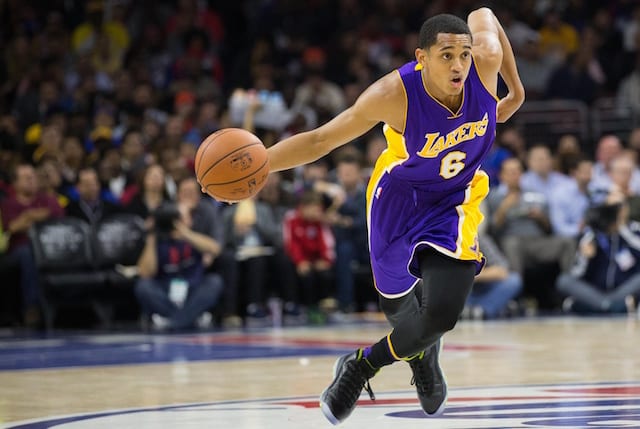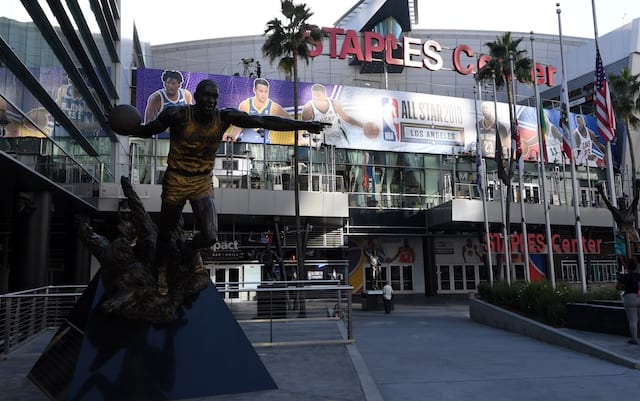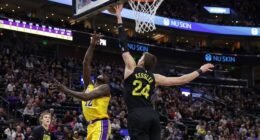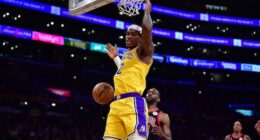The Los Angeles Lakers committed $50 million to Jordan Clarkson this summer, locking up the diamond they unearthed with the 46th pick in the 2014 NBA Draft for four more years. The deal cements Clarkson’s place among the core of young players the Lakers hope to build their future around, and will give the backcourt continuity for the foreseeable future.
The only question is, what exactly did the Lakers get for their money?
Clarkson’s deal is unquestionably one of the most team-friendly of the summer, but despite two seasons in purple and gold, no one is quite sure what he is just yet. Clarkson is a quality player, to be sure, but is he a future All-Star? A starter on a contending team? A Microwave-style scorer off the bench? A role player?
Of course, no one expected Clarkson to be even as good as he is right now. After all, the Washington Wizards sold the pick used to draft him to the Lakers for $1.8 million, and they would certainly like a re-do on that one. Considering the big picture, he has been a massive success.
Still, the Lakers need as much talent as they can get their hands on, and at 24-years-old, we are reaching the point where Clarkson will either make the leap and take his game to the next level, or he won’t. There is nothing wrong with the player that Clarkson is today, but Los Angeles certainly has to be hoping for a breakout season, which would increase their stockpile of young talent and bring more hope for the future.
It won’t be easy, though.
It has been a long road, and the Missouri-product has seen a lot in his two years wearing the Golden Armor.
During Clarkson’s rookie campaign in 2014-2015, he spent the first few months mostly riding the pine for then-Coach Byron Scott. Finally, once it was clear that the Lakers had no chance of making the playoffs, Clarkson was unleashed. He became the Lakers’ starting point guard, and with the ball in his hands, he was able to showcase his ability to successfully navigate the pick and roll. Clarkson’s quickness allows him to slither into the paint almost at will, and he can release a deadly mid-range pull-up when the rotating defender sags into the lane to stop the drive.
Even better, Clarkson notched an impressive five assists per game that season as a starter, to go along with just 2.2 turnovers. His passes may have lacked the flair of a natural playmaker, but he showed that he could make the right read and find open shooters when the situation called for it.
It was a difficult season plagued by a string of injuries, but in the dog days, it was Clarkson who gave fans a reason to tune in.
That summer, the Lakers drafted guard D’Angelo Russell with the second overall pick, intending to play him alongside Clarkson. Russell was heralded as a passing savant, and comparisons to Stephen Curry and James Harden were frequent. Given Russell’s fanfare, it’s no surprise that Clarkson, the hero of the previous season, became something of an afterthought.
Despite this, Clarkson’s ultimate success or failure will be largely tied to his chemistry with Russell, and vice-versa. The basic idea is intriguing: a backcourt composed of a pair of dynamic combo guards capable of playing on or off the ball who will use multiple screens and force defenses to rotate themselves into oblivion.
In an ideal world, Clarkson and Russell will become a one-two punch like Curry and Klay Thompson, Damian Lillard and C.J. McCollum, or John Wall and Bradley Beal.
Unfortunately, building that kind of cohesion takes time, and playing alongside Russell meant asking Clarkson to drastically shift the role he was already becoming accustomed to. He would now have to become even more versatile, acting as a spot-up shooter, a slasher, a facilitator, a scorer, and occasionally a playmaker, often being asked to switch hats several times mid-game.
To complicate matters, Clarkson also had to adapt to playing alongside Kobe Bryant, who was on his farewell tour and was firing off shots faster than the Punisher. Not exactly an ideal scenario to run an offense in.
Taking all of that into consideration, it’s not surprising that Clarkson was statistically slightly better as a rookie than a sophomore. The drop in assists is particularly striking, as they plummeted to just 2.4 per game despite his usage rate remaining relatively high. The declining dishes were indicative of how much Clarkson’s role had shifted. With Bryant and Russell on the floor with him, he wasn’t being asked to create as often, which brought down his overall impact.
Clarkson also struggled defensively, though that was the case for essentially the entire Lakers team. Opposing guards frequently roasted him, as Clarkson isn’t quite as quick laterally as one would think based on his speed when going North-South. He will need to get better at anticipating on the defensive end if he is going to get rid of the whispers suggesting that he’s better off as a sixth man.
All that being said, there is a tenacity to Clarkson that creates reasonable optimism for the future. Clarkson is aware of his shortcomings and is developing a reputation for his tireless efforts to improve them. Stars aren’t made on talent alone; it takes hard work, and that’s some Clarkson excels at.
Last summer he spent much of his time working on his outside shot, and the result was an increase in his three-point shooting from 31 percent as a rookie to 35 percent as a sophomore despite taking nearly twice the amount of threes per game.
If the shooting workout videos of Clarkson posted to social media are any indication, he should make a similar leap from downtown this season, which will go a long way towards giving new Coach Luke Walton the spacing that his offense needs.
It’s also encouraging that Clarkson has dedicated himself to working on his defense. He has visibly added more muscle this summer, which should serve him well when he is dealing with some of the bigger, stronger shooting guards in the league.
That said, the most important facet of Clarkson’s game will undoubtedly be his ability to work alongside Russell. Entering into his third season and four years older than his counterpart, it’s going to be on Clarkson to bring consistency and stability to the relationship.
Clarkson may be something of a forgotten man on a team suddenly bursting with young talent, but going forward, he will be one of the most important players on the floor for the Lakers on a nightly basis. Bryant is gone, and the training wheels are off, all that’s left now is to find out exactly how good Jordan Clarkson can be.








